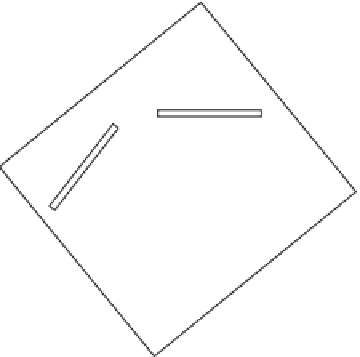Image Processing Reference
In-Depth Information
We know the map's localization with respect to the universe frame
T
R
map
R
u
as well as
the localization of the walls with respect to the map
T
R
wall
i
R
map
. The sensors give us the
localization of the walls with respect to the sensors
T
R
wall
i
R
sensor
j
and the calibration pro-
vides us with the localization of the sensors with respect to the frame associated with
the robot
T
R
sensor
j
R
(
k
)
. We can then infer that:
=
T
R
map
R
u
T
R
wall
i
R
map
T
R
wall
i
R
sensor
j
−
1
T
R
sensor
j
R
(
k
)
−
1
T
R
(
k
)
R
u
·
·
·
map
R
wall 2
R
wall
1
R
sensor2
R
sensor1
R(k)
Ru
R
map
Figure 4.1.
Localization of a moving robot in its environment which is described in a map
This simple example underlines the typical problems that have to be solved in
robotics:
- the determination of transformations
T
R
sensor
j
R
(
k
)
by calibration;
- the evaluation of the transformation
T
R
wall
i
R
sensor
j
based on sensor information,
which requires signal and image processing;
- matching the “walls” that are seen with those that are known and on the map;
- the fusion of information from different sensors that see the various walls.
4.3.2.
Types and levels of representation of the environment
In order to define a strategy for action or perception, it is often necessary to rely on
an interpretation of the situation based on symbolic data with a high semantic level.
For example, we can be faced with situations such that:
- the effector is close to the pin;



















Search WWH ::

Custom Search